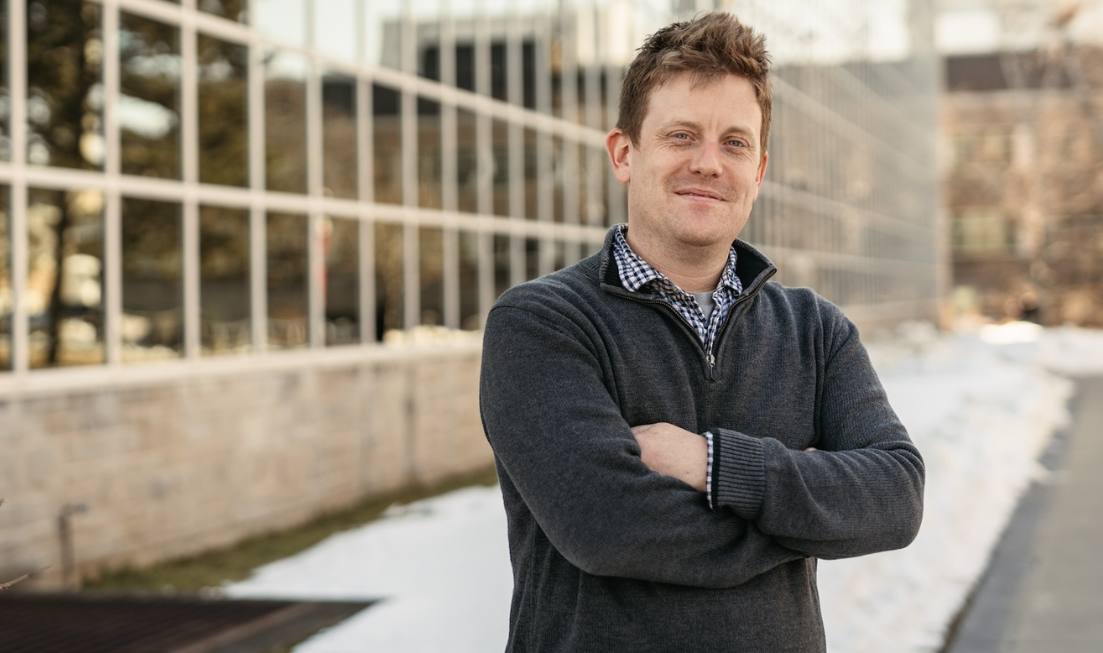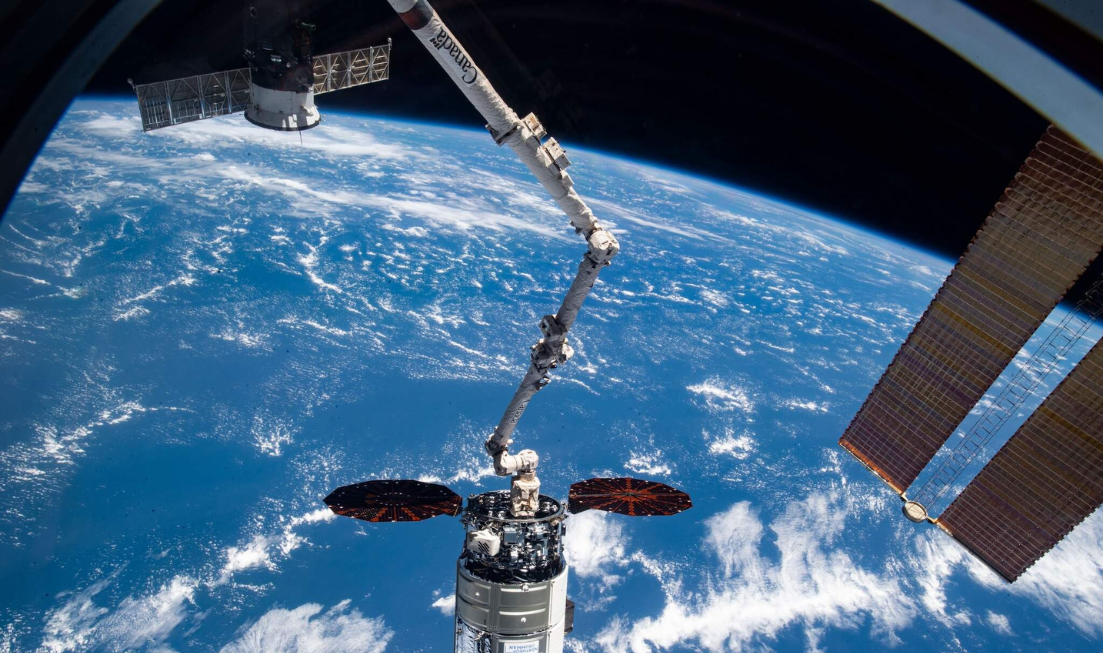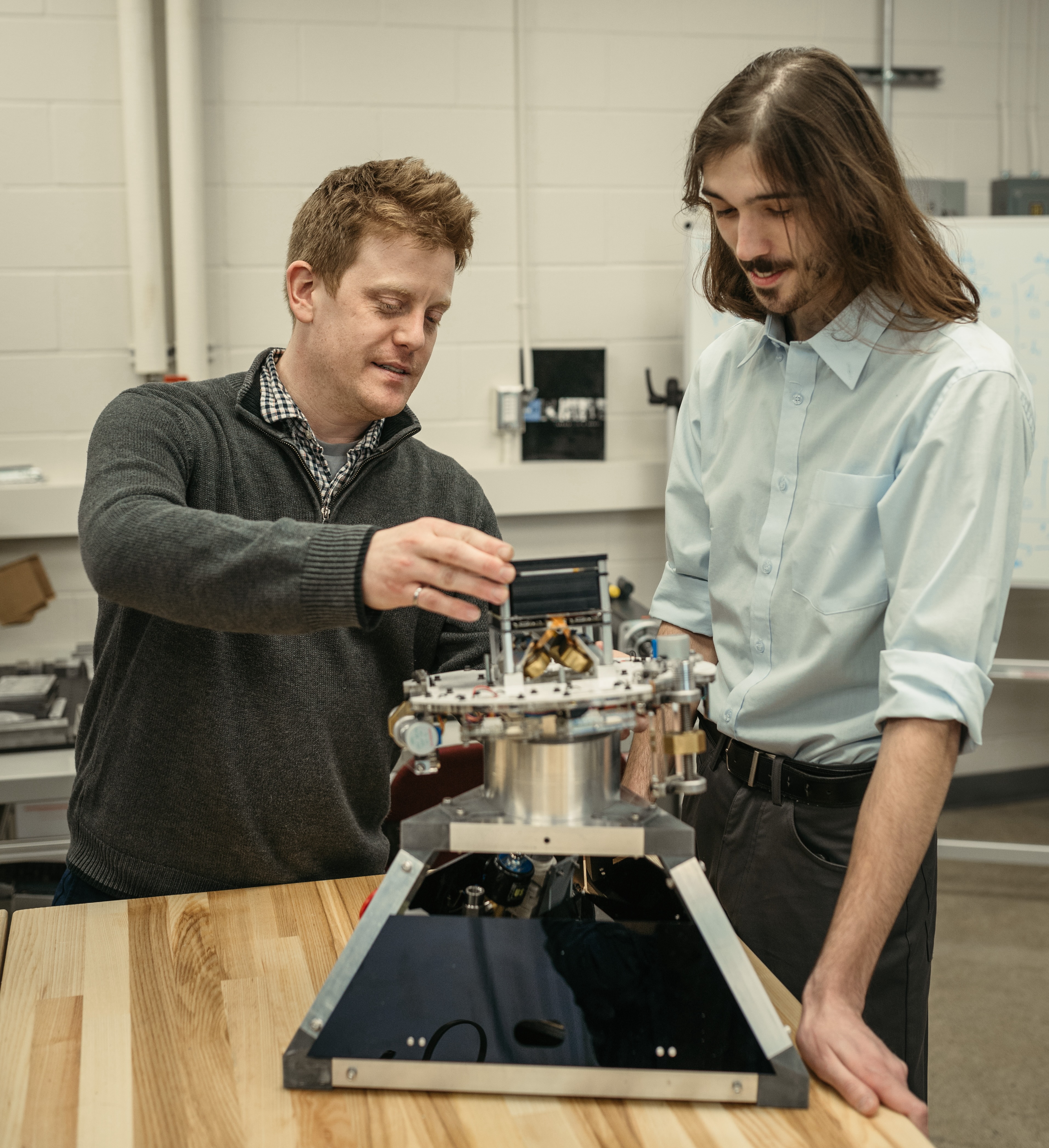Engineering professor teams up with industry leader on space robotics innovation

Andrew Gadsden is leading a new project with MDA Space to integrate artificial intelligence and improve vital robotics systems used in space.
BY Naz Kittani, Faculty of Engineering
October 11, 2024
Andrew Gadsden is no stranger to space. The associate professor of mechanical engineering has a history of combining his expertise and space exploration in innovative ways, including his work with NASA to help create better climate change models.
Now, Gadsden is going to work on improving robotic systems with space robotics company MDA Space — the same company that is developing the Canadarm3 for the Gateway lunar outpost project.
The Advancing Space Robotics: Virtual Sensors and Condition Monitoring project, which will bring together the Intelligent and Cognitive Engineering (ICE) Laboratory at McMaster and the global industry leader, is supported by a new grant from NSERC Alliance, Mitacs Accelerate and MDA Space.
“McMaster Engineering is excited to collaborate with MDA Space on this great project,” says Carlos Filipe, the faculty’s associate dean of Research, Innovation and Partnerships.
“Our growing recognition in both applied and theoretical space research is further solidified by this project, showcasing our expanding expertise and influence in the field.”

Robotics in orbit
Using robotics has changed how space exploration missions are conducted.
Robotic arms, such as the Canadarm, Canadarm2 and the Canadarm3 — which MDA Space is developing for the Canadian Space Agency — play a crucial role in the manipulation, installation and extraction of payloads on space stations, Gadsden explains.
“Ensuring the reliability and safety of these arms through effective anomaly detection and diagnosis is paramount, given the challenging and inaccessible environment in which they operate,” says Paul Grouchy, director of Artificial Intelligence at MDA Space.
McMaster and MDA Space researchers are working on developing and applying novel virtual sensors and AI-based techniques on the next generation of robotic arms for better performance and reliability in space, as well as to reduce the overall cost.
“McMaster University’s engineering department is supporting MDA Space’s initiative to develop cost-effective virtual sensors for commercial robotic space arms, offering faculty and graduate students with expertise in hardware design and AI-driven innovations,” says Nader Abu El Samid, engineer at MDA Space.
Out-of-this world graduate student training

Gadsden, who is the associate chair of graduate studies for mechanical engineering, says this partnership will offer his graduate students very exciting opportunities through hands-on experience in cutting-edge robotics.
“Students will be able to interact with technical experts and gain an insight into the space industry,” he says.
“They’ll be contributing to the advancement of Canada’s global leadership in space robotics.”
Partnerships like this between McMaster Engineering and leaders in the space sector and industry are invaluable for students, agrees Alex McCafferty-Leroux.
The PhD student is also working on the High-Altitude Aircraft Mounted Robotic (HAAMR) telescope mount project with NASA, and recently returned from a two-week visit to the U.S. National Institute of Standards and Technology in Maryland.
“It has been the learning experience of a lifetime being able to collaborate with these companies and institutions,” says McCafferty-Leroux.
“Not only am I receiving practical robotics expertise and guidance from a team of experienced professionals; I get to contribute to important scientific milestones in Canadian space exploration.”


